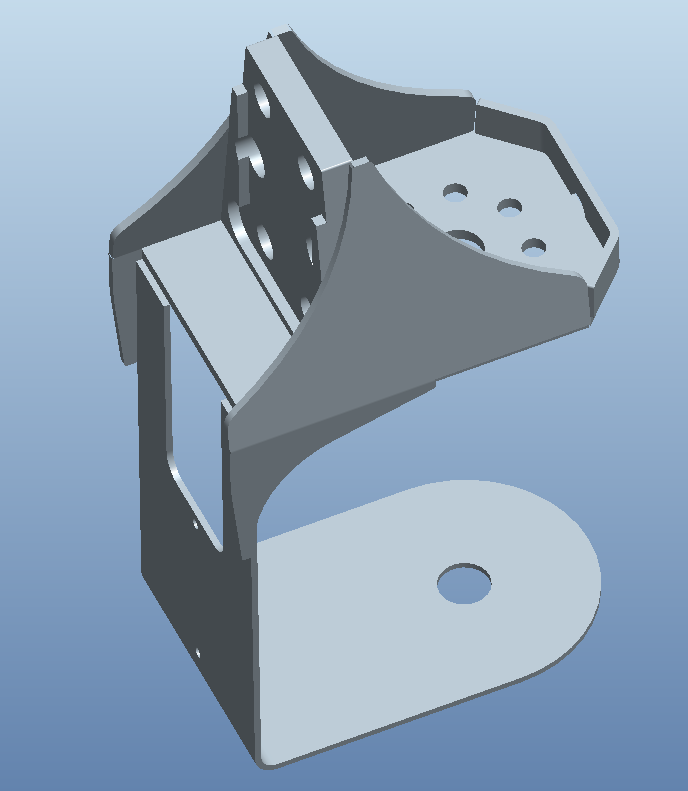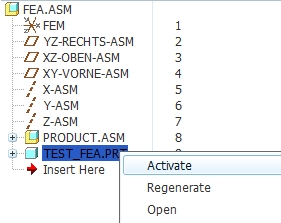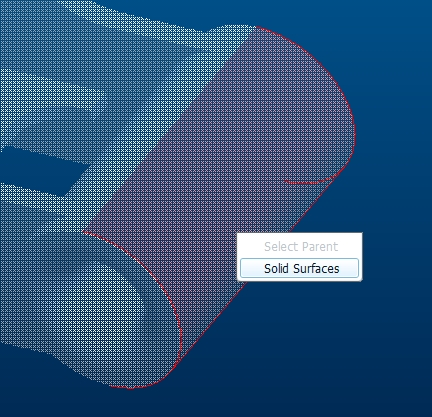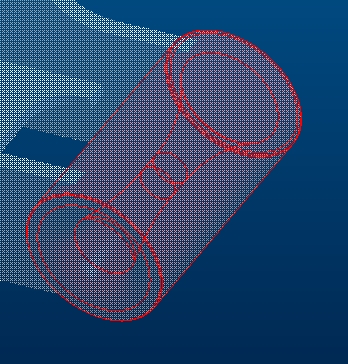Community Tip - Your Friends List is a way to easily have access to the community members that you interact with the most! X
- Community
- Creo+ and Creo Parametric
- 3D Part & Assembly Design
- What is best practice for FEA of assemblies?
- Subscribe to RSS Feed
- Mark Topic as New
- Mark Topic as Read
- Float this Topic for Current User
- Bookmark
- Subscribe
- Mute
- Printer Friendly Page
What is best practice for FEA of assemblies?
- Mark as New
- Bookmark
- Subscribe
- Mute
- Subscribe to RSS Feed
- Permalink
- Notify Moderator
What is best practice for FEA of assemblies?
Hi
I am rater new to Creo Elements, using release 5 from 2009. On a regular basis, we need to do standard static analysis on welded details, such as the one shown on the screenshot. The heigth is about 360mm and weigth 4.4kg material steel. The item is fixed by bolts in the horizontal plates and load is applied at the boltholes in the vertical plate.
My question is, what is the best practice to build a FEM model based on an assembly?
I have considered the following issues by different methods:
- The design might be changed so a new FEM model i required
- It is nice to have the FEM model for a specific version of the assembly for later reference
- preparing the FEM model from the assembly should be simple and not too time consuming
I have tried and/or considered different approaches:
- Make a copy of the assembly using the backup option, so that I dont have to work on the original file
- In Mechanica, add rigid links so that the parts are connected or
- In mechanica add welds so that the parts are connected
- Transform the assembly into a part by -File -Save as:
- shrink wrap (will often remove too many details)
- via IGES
- Via SAT
- Via Step (I lost the reference between the parts 😞 )
- to remove gaps between welded parts and remove unneeded details i then add
- rounds,
- chamfers
- extrusions
- Alternativly I could remodel the item as a part so that i get a good base for the FEM from the start.
Especially step 3 and method 4 is time consuming, but I am more sure to get a usable model than when I make calculations on an assembly (1)
Method 1 also has the disadvantage that surface regions cannot be used together with assembly cut, which is a good tool for simplifying (mirroring)
What are your experiences? which method is the best? Did I overlook some smart way of doing it?
I have earlier worked with Inventor where I typically would use schrinkwrap and with SolidWorks, where i often made a shell model based on the original one, but that was in my previous job where i often worked whit large thinwalled vessels.
Best regards
Torkil Bladt, M.Sc. Eng TCA-Lift, Denmark
Solved! Go to Solution.
- Labels:
-
Assembly Design
- Tags:
- howto
Accepted Solutions
- Mark as New
- Bookmark
- Subscribe
- Mute
- Subscribe to RSS Feed
- Permalink
- Notify Moderator
my method is without AAX:



- STRG+C
- STRG+V
- ENTER
- EDIT->SOLIDIFY... (Wildfire 5)
- ENTER
- STRG+A
regards
Paul
- Mark as New
- Bookmark
- Subscribe
- Mute
- Subscribe to RSS Feed
- Permalink
- Notify Moderator
Did you have intf3d_in_as_part set to yes when you imported the step file? If not then change that and try it again.
If you are looking for how to keep a simulate model separate from the design model yet be able to be updated, then I would look at using inheritence models. There is an old PTC User presentation that explains this:
- Mark as New
- Bookmark
- Subscribe
- Mute
- Subscribe to RSS Feed
- Permalink
- Notify Moderator
hi
my method: exmaple fea_asm.zip
regards
paul
info (german) attached
- Mark as New
- Bookmark
- Subscribe
- Mute
- Subscribe to RSS Feed
- Permalink
- Notify Moderator
Hallo Paul
Thank you for the model you uploaded. I could not figure out how to do the copy and solidify step, but I found an equally simple method: Insert-Shared Data-Merge/inheritance. Maybe you use a newer version of Creo, we use Creo 1, also called Creo elements/pro 5.0 from 2009
This method has several advantages to the export/import method (2) in my original question, so I think that we will test it out. But other ideas are of cause welcome still ![]()
I have not yet read your paper, it is mainly about the stresses in the welding I see, which is not what I am looking for at the moment. But I'll go through it later (I do read German)
Viele Grusse, Torkil
- Mark as New
- Bookmark
- Subscribe
- Mute
- Subscribe to RSS Feed
- Permalink
- Notify Moderator
my method is without AAX:



- STRG+C
- STRG+V
- ENTER
- EDIT->SOLIDIFY... (Wildfire 5)
- ENTER
- STRG+A
regards
Paul
- Mark as New
- Bookmark
- Subscribe
- Mute
- Subscribe to RSS Feed
- Permalink
- Notify Moderator
Ok, now I get it.
I am not sure if my method requires AAX, but I think that the results are pretty much the same
For Info to other users with keybords that are similar to mine:
In Pauls description STRG+C Means pressing the <Ctrl> and the <C> key at the same time
I think Your method is good for our purpose, Paul, so I'll grant it the 'correct answer'
Mojn
Torkil





